White perennial flowers bring timeless elegance and a sense of serenity to any garden landscape. Their pristine blooms evoke feelings of purity and tranquility, creating stunning focal points or adding delicate accents throughout the garden.
From the classic beauty of Shasta daisies to the ethereal charm of Star Jasmine, these perennial wonders offer a diverse range of shapes, sizes, and textures.
To select the most exquisite white perennial flowers that complement your garden’s style, keep reading the article below.
Different Types of White Perennial Flowers
Cora Louise Itoh Peony
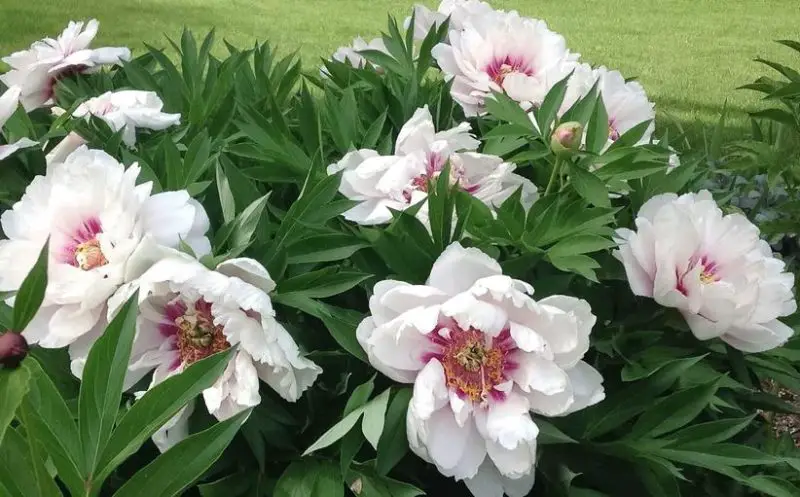
The Cora Louise Itoh Peony, or Paeonia in scientific parlance, is a striking plant that draws attention. It produces a beautiful display with its huge white flowers that are embellished with bright yellow filaments and vivid fuchsia stripes radiating from the center. This pop of color is accentuated by the comparatively flat petals, which makes it a wonderful accent to any cut flower garden—especially when combined with a black perennial like petunias.
Mature shrubs produce copiously, with an average of fifty blooms per plant. Although they sometimes compete for resources, these late spring to early summer blooming peonies do best when rooted away from other plants. Hardy in zones 5 through 9, they require little care for decades to thrive, making them a beloved perennial for many years to come.
Foamflower
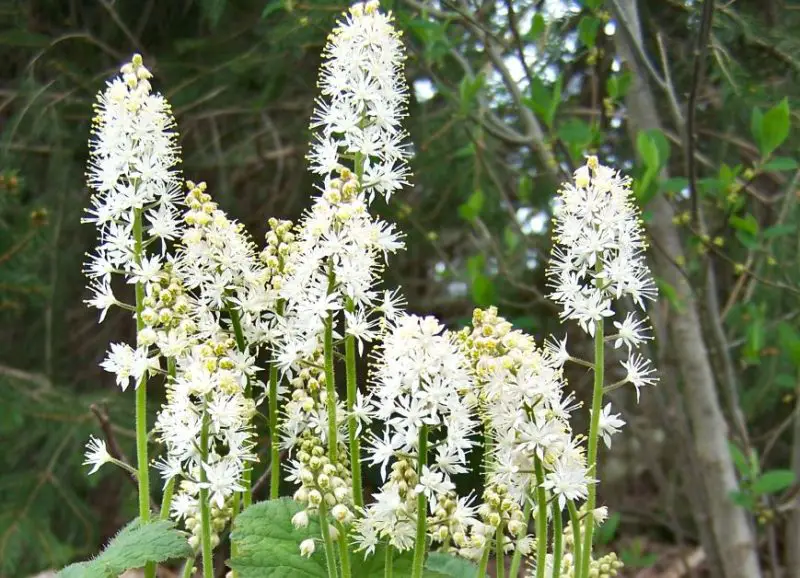
A beloved plant throughout North America for their versatility and beauty is the foamflower, or Tiarella cordifolia as it is known technically. These natural runners are popular as border, filler, and foliage plants since they grow well in zones 4–9. Their slender spires of luxuriant leaves with burgundy centers are what give them their year-round verdant beauty in warmer climates.
Their beautiful chocolate-colored veins against creamy white clusters of bottlebrush flowers steal the show during the spring and summer months. Plant them in shady, well-moisture-retaining soil that is rich in humus for maximum budding. Foamflowers lend an air of refinement to any garden setting with their alluring look and versatility.
Festiva Maxima Peony
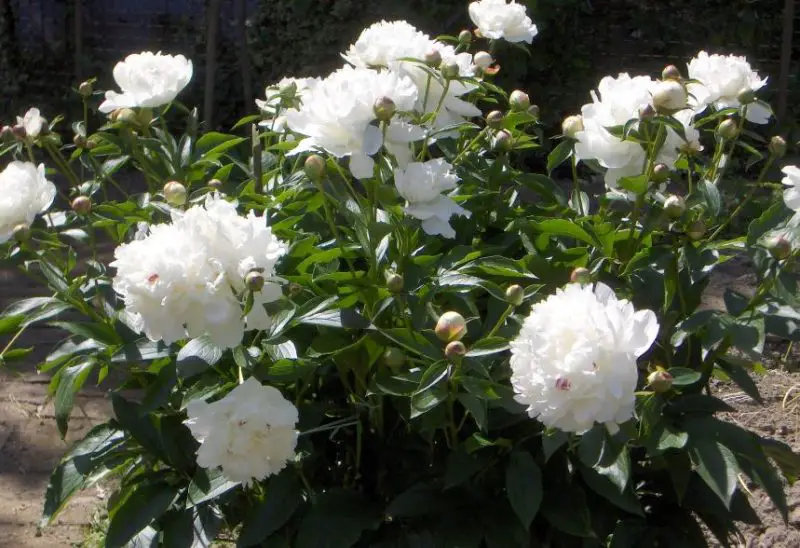
In any garden, the Festiva Maxima Peony—scientifically known as Paeonia lactiflora—is a magnificent masterpiece. Its captivating appearance is created by its softly curving petals, which are accented with a subtle carmine blush at the frilly edges. Despite having a bloom that lasts only a week in late spring and early summer, bad weather does not take away from its attractiveness.
Peonies are beloved by gardeners because of their long lifespan, easy maintenance, and ever-changing foliage that lasts for generations. Early autumn planting gives them plenty of time to grow roots in wet, well-drained soil, preparing them for their magnificent blooms in the following seasons.
Foxglove Beardtongue
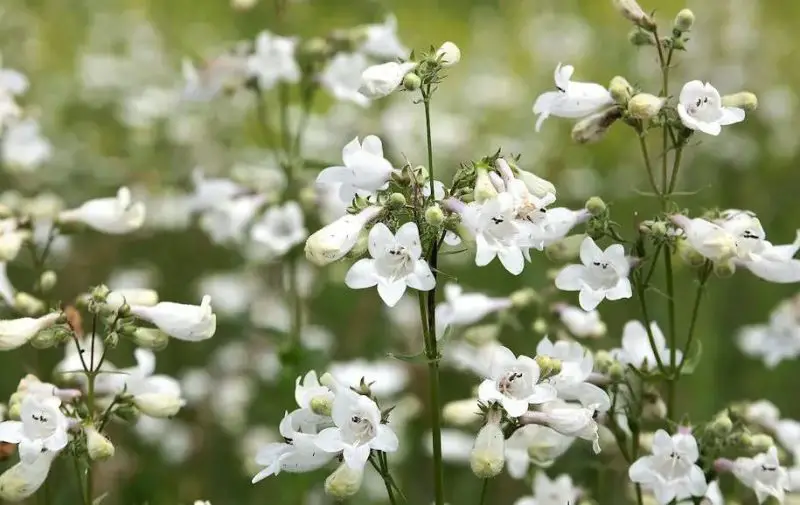
With its lovely bell-shaped blossoms, the Foxglove Beardtongue, scientifically known as Penstemon laevigatus ssp. digitalis, fascinates pollinators and gardeners alike. These 1-inch marvels, which bloom from May to July, are colored from white to blush pink and have a deep purple throat that attracts hummingbirds and bees.
The Foxglove Beardtongue, a native of the Mississippi Basin, grows best in zones 3–8, adapting well to a range of soil moisture conditions from dry to mild to high. Although they thrive in acidic soil, they are remarkably resilient in alkaline conditions as well, which makes them a popular and adaptable addition to gardens in a variety of settings.
Galaxy White
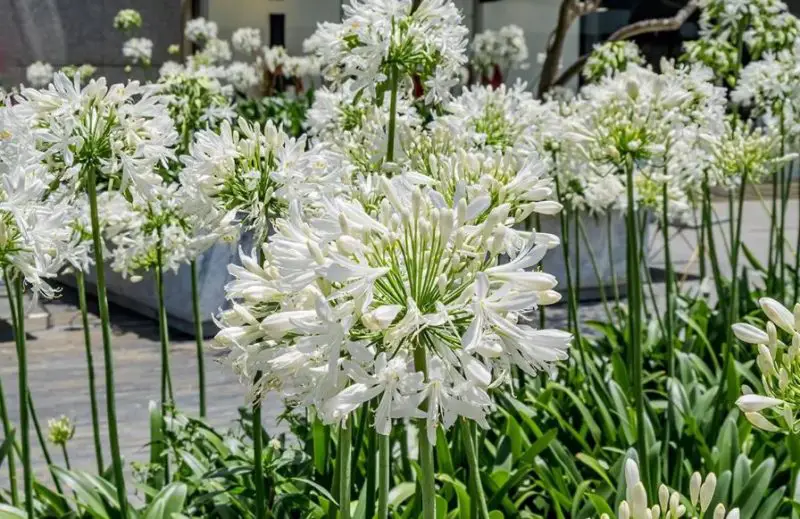
Known scientifically as Agapanthus africanus, or Galaxy White, it is commonly known as the African lily or Lily of the Nile and is adored for its captivating show of creamy white trumpets. This plant makes a captivating display because of its vibrant dark stamen, which contrasts exquisitely with its yellow neck. Reaching a height of three to four feet, its robust stems provide a natural wall that is embellished with textured clusters of blossoms and buds, suitable for borders.
Galaxy White is a hardy overwintering plant that does well in zones 6–11. It needs a covering of mulch to protect it. At least six hours of direct sunlight per day are ideal, as is some partial shade and mild moisture. All who see it are enthralled by its peak splendor, which appears in late spring or early summer.
White Prosperity Gladiolus
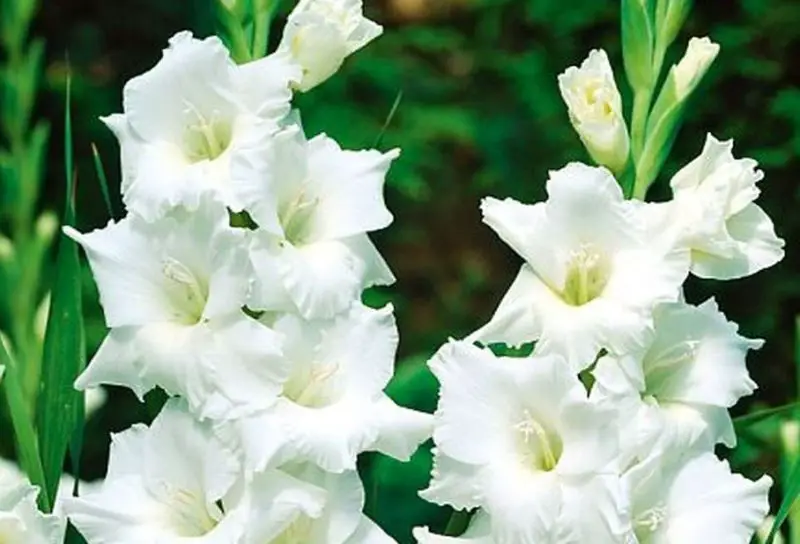
The White Prosperity Gladiolus, scientifically known as Gladiolus x hortulanus, is a striking option in the realm of “Sword Flowers.” With layers of ruffled leaves adorning its spike-like stem, it exudes elegance and allure, perfect for summer weddings or adding sophistication to homegrown bouquets. Taller plants, reaching heights of five feet, have bigger flowers that make a striking impression.
To ensure optimal growth, plant them in humusy, well-drained soil with low clay content. During flowering, provide ample water, as they require more hydration, typically lasting about two weeks. Staggered planting biweekly after the last frost until late May prolongs their beauty, with fresh florets emerging as older ones fade away.
Great White Trillium
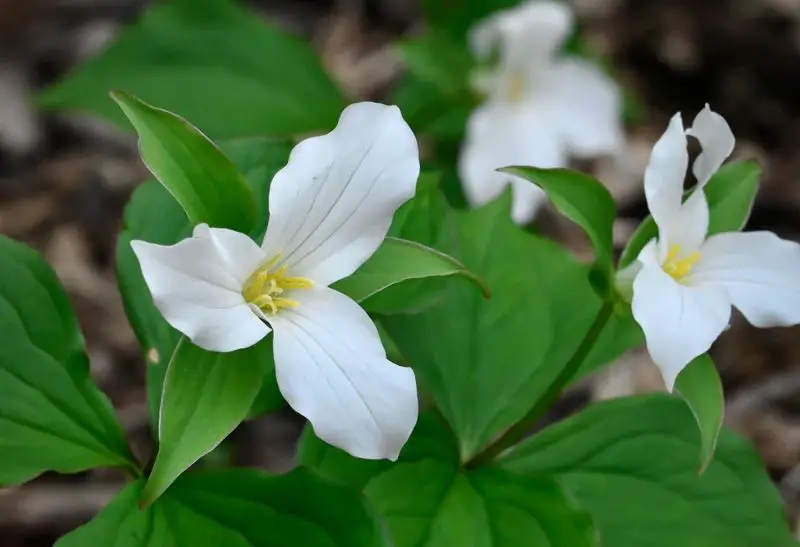
Known by its scientific name, Trillium grandiflorum, the Great White Trillium is a beloved wildflower that grows naturally in eastern US woodlands and is simple to incorporate into home gardens. Known by many as Trinity Flowers because their leaves, petals, and seedpods all grow in threes, they are also called Wake Robins because they bloom right before robins return to the forest.
This species is distinguished by its petals, which change color as the flowering season goes on, from pristine white to salmon pink. They grow best in zones 3 through 9, with rich, organic soil and complete shade being preferred. But watch out for the deer—they love Great White Trilliums as a snack!
Honorine Jobert Japanese Anemone
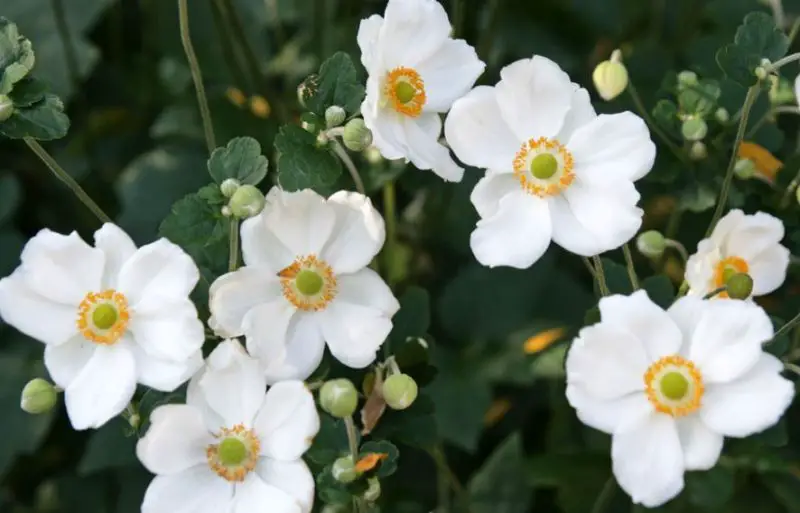
The Honorine Jobert The Japanese Anemone, or Anemone x hybrida in technical parlance, is a marvel of the late season with softly cupped white petals and an eye of sage green encircled by orangish-yellow stamen. Known by their fitting moniker, the Windflower, these plants gracefully waver in the tiniest wind, lending a whimsical touch to any landscape. Their blooms add a wonderful burst of color to gardens from late summer through fall.
These slow-growing beauties thrive in zones 4-8, especially when planted in full sun with normal, clay, or acidic soil. Keep them well-watered, as they exhibit high moisture tolerance. Removing blackened leaves and shielding the roots will ensure years of profuse flowers in areas with severe winters.
Masterwort
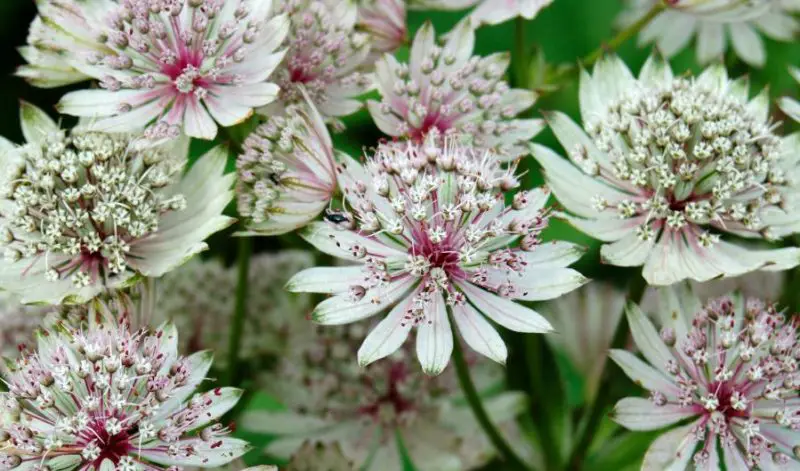
Astrantia major, scientifically known as the pink-speckled ivory Masterwort, adds a charming variation to your collection of white perennials. Its fireworks-shaped blooms offer whimsy to any garden with its adorable pincushion floret center surrounded by delicate, paper-thin petals.
These lovely plants grow best in zones 4 through 9, reaching a modest height of up to 2 feet in ideal soil conditions. They do best in shady settings with rich, wet soil. They need frequent watering to survive and dislike dry spells. To promote ongoing flourishing, biennial fertilizer that is customized to the organic content of your garden soil is also advised.
Swamp Milkweed
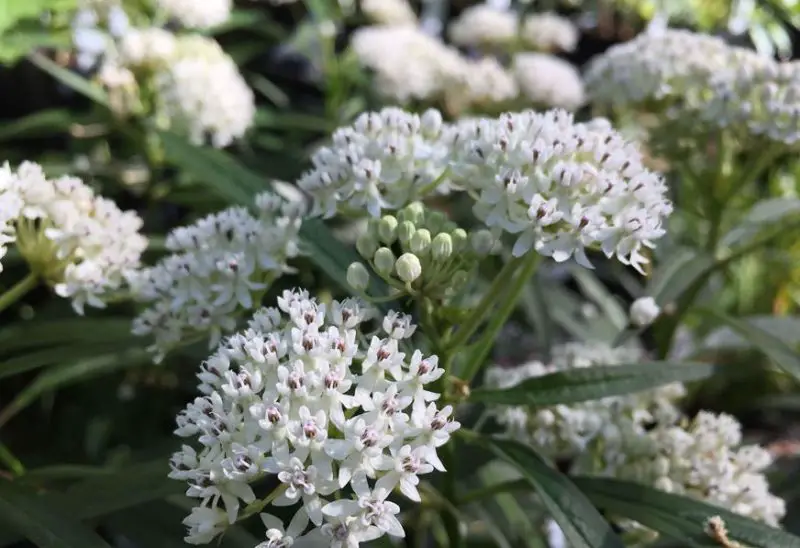
Swamp Milkweed, scientifically named Asclepias incarnata, offers umbrels of summer-blooming flowers and slender leaves. Once in bloom, it unveils modest clusters of white, flat-petaled blossoms, attracting Monarch butterflies while dispersing its seeds through parachutes in the fall.
It can withstand moderate shade but grows best in full sun and moist soil. Gardeners would be prudent to thin down dormant winter foliage prior to its springtime resurrection. Swamp milkweed is a lovely ground cover, but it can also be invasive, taking nutrients from nearby plants. Maintaining harmony in your garden and keeping it under control requires vigilant management.
Alexander’s White Candytuft
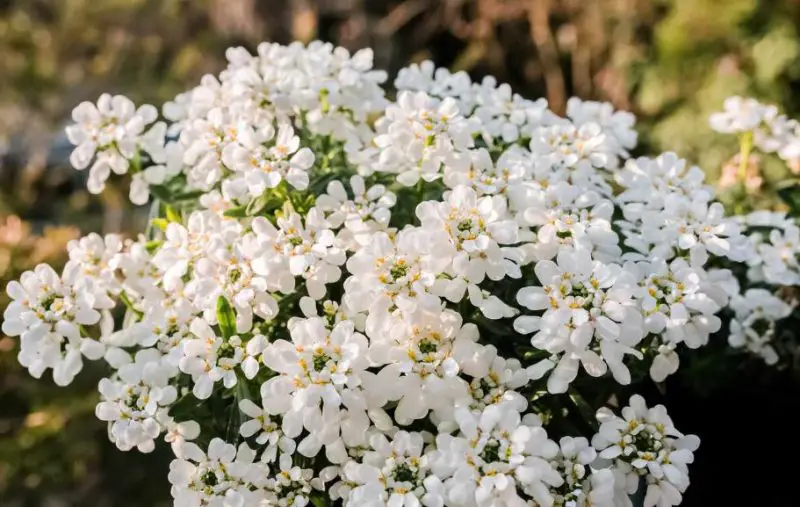
Alexander’s White Candytuft, scientifically known as Iberis sempervirens, is an enchanting perennial shrub. In the heart of spring, specifically during April and May, it showcases abundant tufts of four-petaled flowers. These blossoms cluster tightly together, flaunting a creamy white hue contrasted by striking yellow centers, enhancing its ground-covering beauty.
The plant’s semi-woody stems are robust and low, capable of rooting spontaneously where they contact soil. Ideal for sunny spots with well-drained terrain, this shrub avoids the perils of crown rot by shunning overly wet conditions.
Growing abundantly in USDA zones 3 to 8, it is semi-evergreen during hard winters and evergreen in gentler areas. It grows to a height of about 12 inches and attracts butterflies while keeping deer and rabbits away.
Cape Jasmine Gardenia
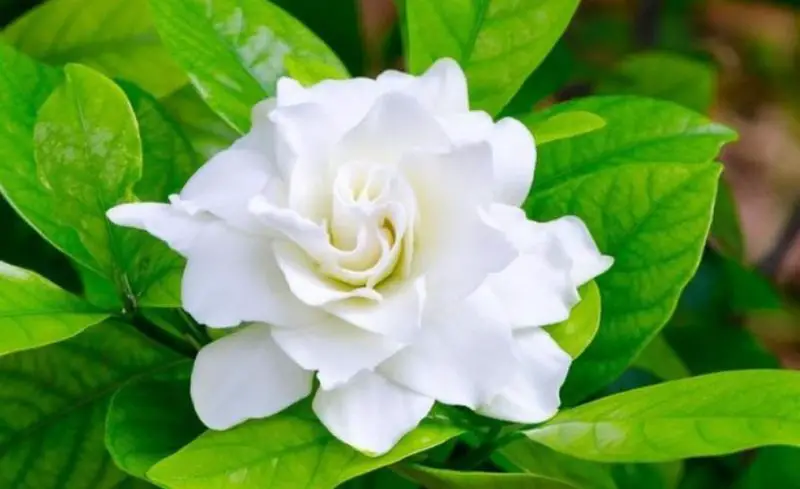
The glossy green foliage and huge, beautiful petals of the Cape Jasmine Gardenia, also known as Gardenia jasminoides, fascinate onlookers. In ideal circumstances, the plant can produce blossoms as wide as 4 inches. It was one of the first to be registered with the US Plant Patent Office and is hailed as a southern symbol.
Its rose-like double blooms have a strong gardenia perfume that lingers throughout the early spring and summer blooming.
This plant, which thrives in zones 7-9, enjoys hot summers and mild winters. It is a great option for indoor cultivation as well as garden beds because it thrives in acidic soil and full sunlight.
Caribbean Spider Lily
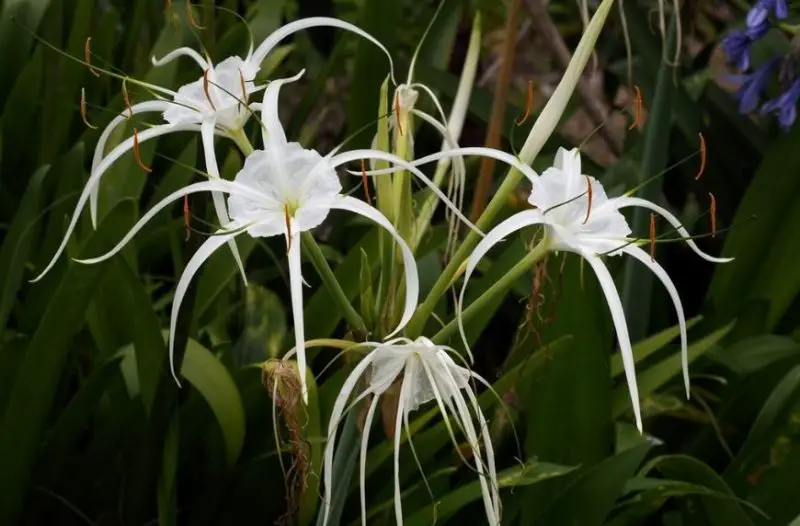
Hymenocallis caribaea, the scientific name for the Caribbean Spider Lily, is a breathtaking sight with its daffodil-shaped central cup encircled by six long, spindly petals. A rich vanilla scent emanating from these blooms draws in butterflies and other pollinators.
Reaching a height of three feet, it blooms intensely from mid- to late summer. This lily, which is native to the Caribbean Islands and Central America, does best in full sun and in damp, marshy soil.
For optimal growth and flower production, gardeners in colder climates should think about overwintering the bulbs indoors and replanting them every spring. Bulbs can be grown in zones 7–11.
Climbing Hydrangea
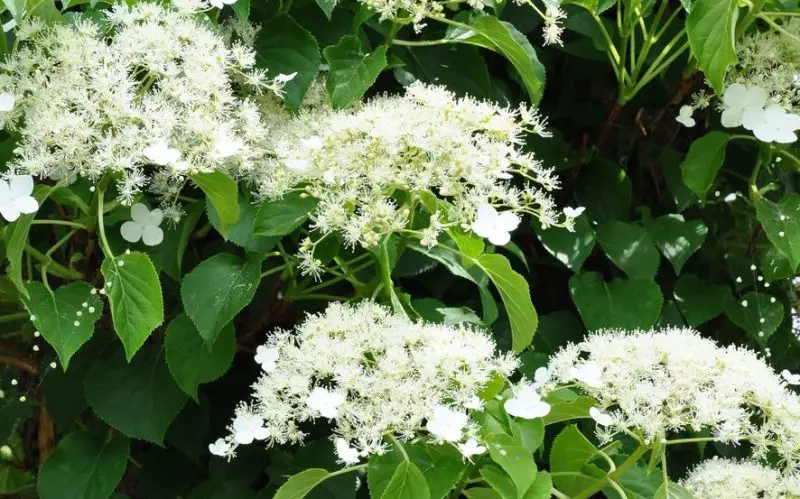
The only climbing variant of Hydrangea in its species is Hydrangea anomala petiolaris, or climbing Hydrangea. Its woody vines are well-liked as house climbers because they have holdfasts that enable them to climb without a trellis. They can grow to heights of thirty to forty feet and do well in shade in zones four through nine.
They grow slowly, often taking up to five years to blossom at first, but the wait is well worth it when gorgeous, lacy, snow-white puffs of flowers appear. Small fertile flowers are mixed with larger, decorative sterile flowers around the periphery of these blooms.
The blooms’ specific climatic requirements are highlighted by the fact that they must experience temperatures below 65 degrees Fahrenheit for at least six weeks in order to bud.
Misty Lace Goatsbeard
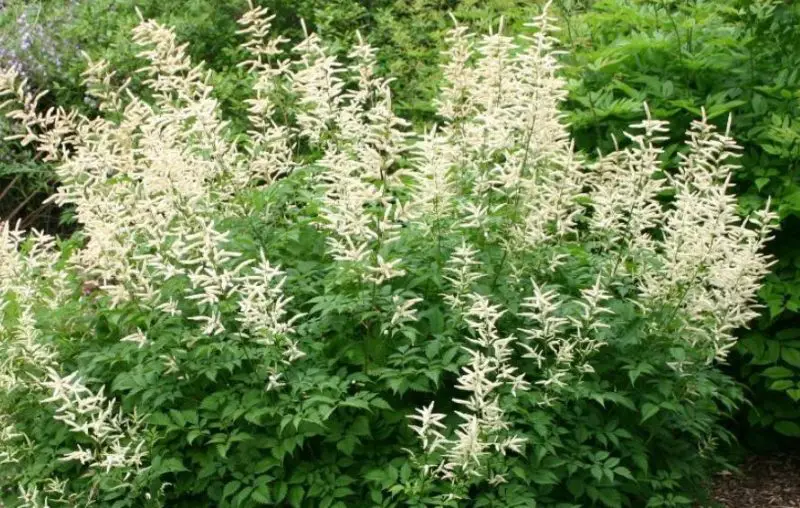
Misty Lace Goatsbeard, scientifically termed Aruncus, lends a rustic charm to garden beds with its fern-like fronds and wispy white flowers, complemented by deep red stems for added allure. Blooming during the warmth of summer and temperate fall, its flowers gracefully fade, leaving behind lush mounds of foliage.
When planted in well-fertilized soil that holds moisture, this hardy plant can withstand high temperatures and humidity. It will be simple to cultivate and offer a touch of beauty and texture to small garden landscapes for gardeners in zones 3–7.
Mountain Mint
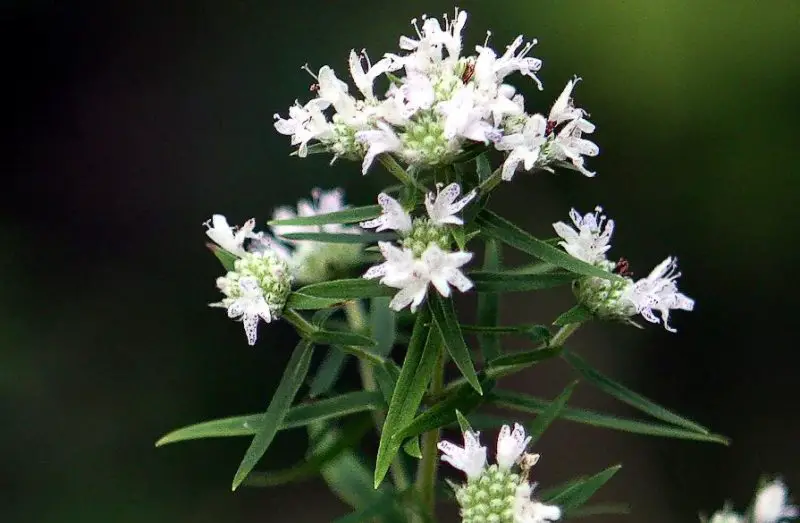
Pycnanthemum virginianum, or mountain mint, is a useful and visually beautiful plant. Its white blooms with lavender-hued specks and crisp, fragrant foliage provide a pleasant sensory experience. The inflorescence draws a wide range of pollinators due to its tightly packed buds that bloom at different times.
Ideal for zones 3-7, this aromatic perennial thrives with full sun exposure and ample water. Home gardeners can enhance its growth by ensuring these conditions. Additionally, the leaves can be muddled to add a refreshing twist to beverages like juleps or iced tea, making Mountain Mint a versatile and rewarding addition to any garden.
Peter Cottontail
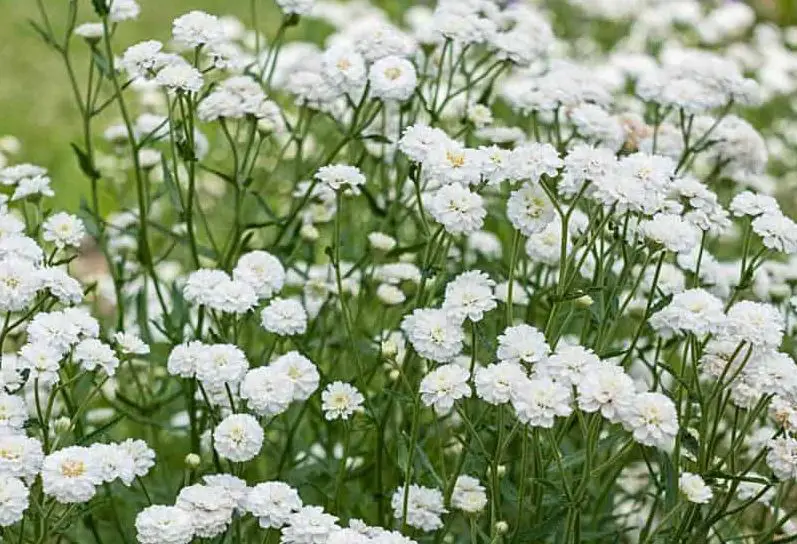
Consider planting Peter Cottontail, often called “Sneezewort,” for a delightful variation on classic yarrow. This medium-sized shrub has fluffy flower clusters that resemble bunny tails and long-lasting blooms. Its cold white hue is reminiscent of Baby’s Breath, which gives any garden a whimsical touch.
In zones 3–8, yarrow, especially Peter Cottontail, grows best in well-drained soil and lots of sunshine. Yarrow plants are remarkably low-maintenance; they don’t need many extra nutrients to thrive, and they can tolerate bad soil. Anticipate the arrival of the first fluffy blooms in early summer, which will grace your garden until the end of fall.
Shasta Daisies
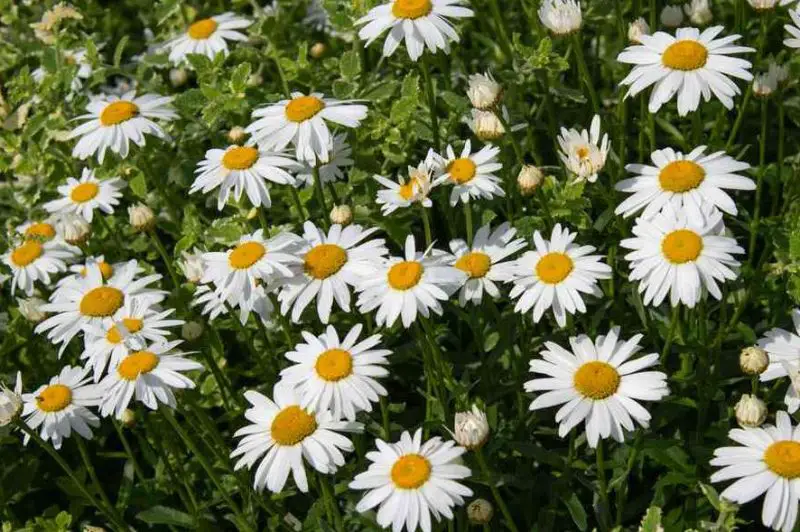
When creating a list of white perennial flowers, the Shasta daisy is an iconic plant that cannot be missed. This classic beauty, with its timeless charm, has a bright stamen cluster wrapped in a ring of pristine petals that resembles freshly fallen snow. Shasta daisies have great decorative value; they make for lovely focal pieces or a sweet contrast to more dramatic foliage.
Shasta daisies can retain their evergreen appeal in warmer zones 5–9. It is better to wait until early spring to plant them in full sun with good drainage, though, as frost poses a serious risk. If you want your daisies to bloom brilliantly in the spring, avoid planting in the fall.
Snowdrop Anemone
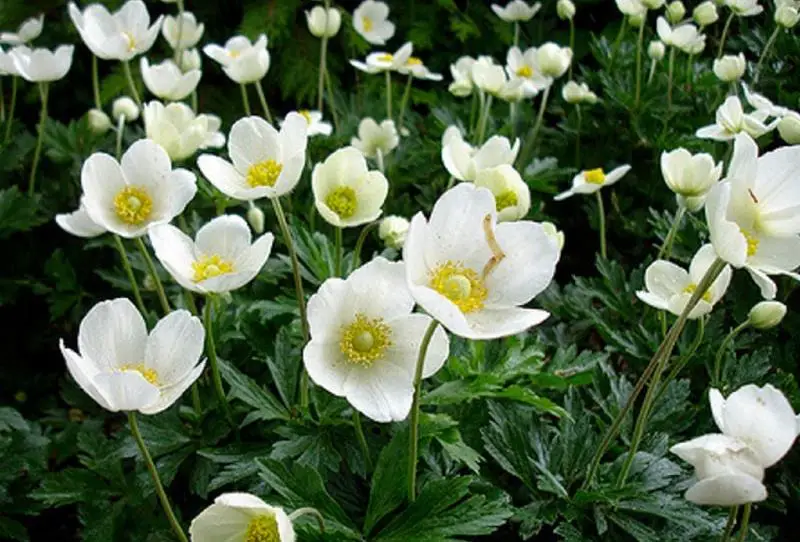
With slightly cupped alabaster petals and a vivid canary yellow center, the Snowdrop Anemone, formally known as Anemone sylvestris, is comparable to its sister subspecies, the Honorine Jobert Japanese Anemone. But what really makes them stand out is the gorgeous blush that emanates from the purplish-green stem with ombre.
Snowdrop anemones are sylvan plants that thrive among shade trees. They spread very quickly in the loose, sandy soil under these trees. Exceptionally resilient to cold, they withstand severe winters in zones 3–8, emerging with their woolly heads in late spring or early summer to lend a delicate elegance to forest gardens.
Snowflake Creeping Phlox
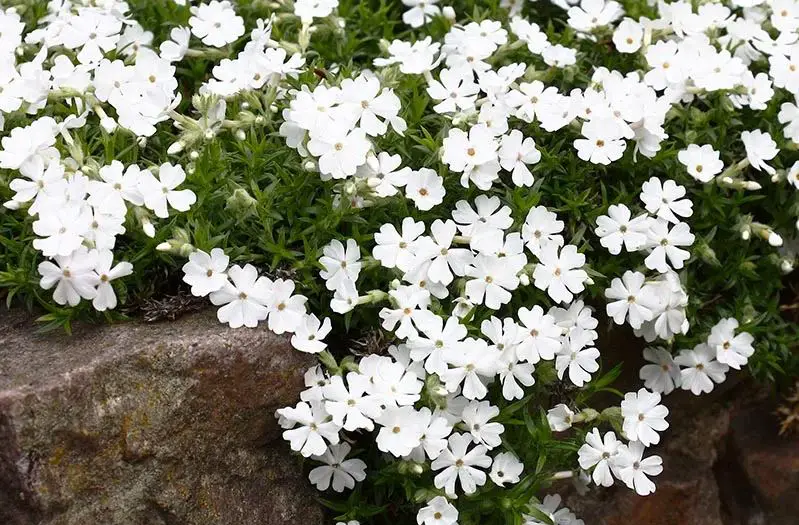
Phlox subulata, also known as Snowflake Creeping Phlox, is a great option for evergreen landscapes that are in need of some winter flair. It creates beautiful ground cover in mid-to-late spring when it covers the ground with mats of starry flowers. Additionally, the loose clusters create eye-catching cascades over garden walls or trellises.
Its needle-like leaves, which bring brightness to the approaching dreary winter days, keep their vivid emerald tint even after the flowers fade in early July. Snowflake Creeping Phlox is a perennially beautiful and textural addition to your garden, growing well in zones 3-8 and flourishing in full sun.
Star Jasmine
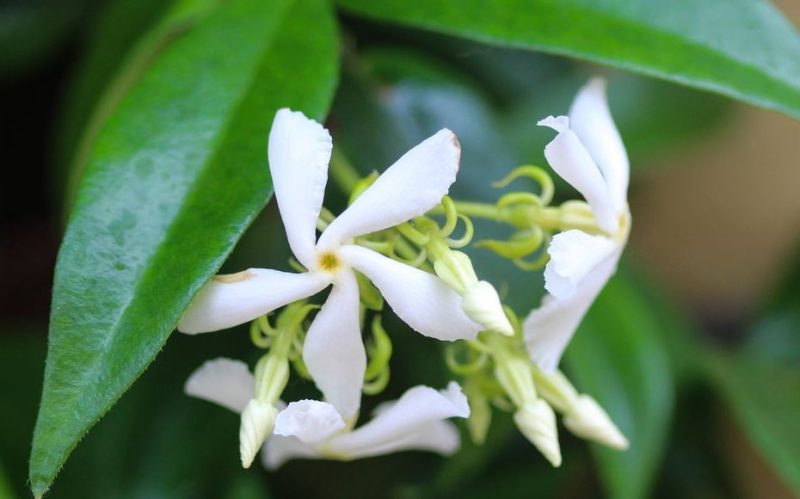
The five-petaled blossoms of the star jasmine, scientifically known as Trachelospermum jasminoides, give the plant its name. It is a sensory joy. It is the most widely grown kind of jasmine, and in late spring and early summer, bees come to visit its wonderfully scented blooms. It climbs quickly and has the ability to grow up to 6 feet vertically annually after its first season.
Plenty of sunshine and loamy, medium-moisture soil are necessary for optimal growth. It grows well in containers in areas outside of its comfort zone and is adaptable enough to be moved when the weather is right. Only after the first year should fertilization begin in order to allow for adequate establishment.






